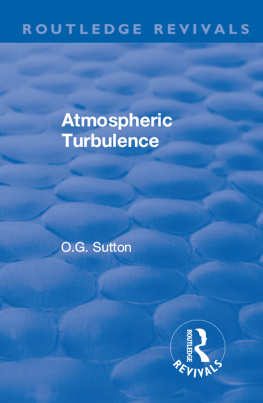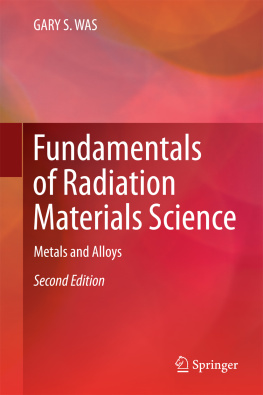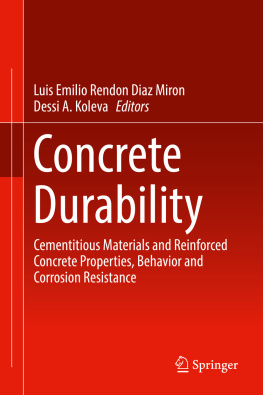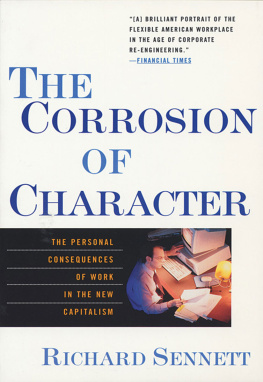
Table of Contents
List of Tables
- Chapter 02
- Chapter 04
- Chapter 05
- Chapter 06
- Chapter 07
- Chapter 08
- Chapter 11
- Chapter 12
- Chapter 14
- Appendix C
- Appendix D
- Appendix E
- Appendix F
- Appendix G
- Appendix H
- Appendix I
- Appendix J
List of Illustrations
- Chapter 02
- Chapter 03
- Chapter 04
- Chapter 05
- Chapter 06
- Chapter 07
- Chapter 08
- Chapter 09
- Chapter 10
- Chapter 11
- Chapter 12
- Chapter 13
- Chapter 14
- Chapter 15
- Appendix B
- Appendix C
- Appendix D
- Appendix E
- Appendix F
- Appendix G
- Appendix H
- Appendix I
- Appendix J
Guide
Pages
THE ELECTROCHEMICAL SOCIETY SERIES

ECSThe Electrochemical Society
65 South Main Street
Pennington, NJ 085342839
http://www.electrochem.org
A complete list of the titles in this series appears at the end of this volume.
ATMOSPHERIC CORROSION
Second Edition
CHRISTOFER LEYGRAF
KTH Royal Institute of Technology, Stockholm, Sweden
INGER ODNEVALL WALLINDER
KTH Royal Institute of Technology, Stockholm, Sweden
JOHAN TIDBLAD
Swerea KIMAB, Stockholm, Sweden
THOMAS GRAEDEL
Yale University, New Haven, CT, USA
Copyright 2016 by John Wiley & Sons, Inc. All rights reserved.
Published by John Wiley & Sons, Inc., Hoboken, New Jersey
Published simultaneously in Canada
No part of this publication may be reproduced, stored in a retrieval system, or transmitted in any form or by any means, electronic, mechanical, photocopying, recording, scanning, or otherwise, except as permitted under Section 107 or 108 of the 1976 United States Copyright Act, without either the prior written permission of the Publisher, or authorization through payment of the appropriate percopy fee to the Copyright Clearance Center, Inc., 222 Rosewood Drive, Danvers, MA 01923, (978) 7508400, fax (978) 7504470, or on the web at www.copyright.com. Requests to the Publisher for permission should be addressed to the Permissions Department, John Wiley & Sons, Inc., 111 River Street, Hoboken, NJ 07030, (201) 7486011, fax (201) 7486008, or online at http://www.wiley.com/go/permissions.
Limit of Liability/Disclaimer of Warranty: While the publisher and author have used their best efforts in preparing this book, they make no representations or warranties with respect to the accuracy or completeness of the contents of this book and specifically disclaim any implied warranties of merchantability or fitness for a particular purpose. No warranty may be created or extended by sales representatives or written sales materials. The advice and strategies contained herein may not be suitable for your situation. You should consult with a professional where appropriate. Neither the publisher nor author shall be liable for any loss of profit or any other commercial damages, including but not limited to special, incidental, consequential, or other damages.
For general information on our other products and services or for technical support, please contact our Customer Care Department within the United States at (800) 7622974, outside the United States at (317) 5723993 or fax (317) 5724002.
Wiley also publishes its books in a variety of electronic formats. Some content that appears in print may not be available in electronic formats. For more information about Wiley products, visit our web site at www.wiley.com.
Library of Congress CataloginginPublication Data
Names: Leygraf, Christofer. | Odnevall Wallinder, Inger. | Tidblad, Johan, 1964 | Graedel, T. E.
Title: Atmospheric corrosion.
Description: Second edition / Christofer Leygraf, Inger Odnevall Wallinder, Johan Tidblad, Thomas Graedel. | Hoboken, New Jersey : John Wiley & Sons, Inc., [2016] | Includes bibliographical references and index.
Identifiers: LCCN 2016015705| ISBN 9781118762271 (cloth) | ISBN 9781118762189 (epub)
Subjects: LCSH: Corrosion and anticorrosives.
Classification: LCC TA418.74 .L49 2016 | DDC 620.1/1223dc23 LC record available at https://lccn.loc.gov/2016015705
PREFACE
Iron was first separated from its ore about 4000 B.C. and promptly began to corrode. In the 6000 years since, a wide variety of pure materials have been isolated and alloyed or composite materials have been created from isolated constituents, materials have been worked in various ways, products of almost infinite variety have resulted, and corrosion is still with us.
The global cost of atmospheric corrosion has been estimated, with more bravery than accuracy, at upward of US$100 million per year. Whatever the correct number, it is clear that atmospheric corrosion extracts an enormous tollelectrical and electronic equipment fails to function, bridges collapse, intricate surfaces of statuary grow smooth or disintegrate, and on and on. What can be done about this situation, and how soon?
Atmospheric corrosion has been a subject of engineering study, largely empirical, for nearly a century. Scientists came to the field rather later on and (partly because of inherent experimental and conceptual difficulties discussed in this book) had considerable difficulty bringing their arsenal of tools to bear on the problem. In the decades of the 1990s and 2000s, it was finally possible to initiate controlled field and laboratory studies, as well as computer model investigations of atmospheric corrosion processes. Even so, atmospheric corrosion was traditionally studied by specialists in corrosion having little knowledge of atmospheric chemistry, history, or prospects. In the first version of this book, the approach was to combine the fields, one of the authors (C.L.) being principally an experimental corrosion scientist and the other (T.E.G.) principally an atmospheric chemist. In the second edition the approach has been extended further, by including also an author that has pioneered the field of environmental aspects of corrosion (I.O.W.) and one with substantial insight into atmospheric corrosion modeling and also in international corrosion exposure programs (J.T.). The combination of specialities provides a more comprehensive view than what results from a single specialist picture. The perspectives emerging from our relatively recent efforts and those of many others begin to tell us what is happening when atmospheric corrosion occurs and how it might best be prevented or minimized. These scientific insights into the corrosion process and its amelioration are the focus of this book.
This book concerns primarily the atmospheric corrosion of metals and is written at a level suitable for advanced undergraduates or beginning graduate students in any of the physical or engineering sciences and is designed to be suitable for a onesemester course. In addition, we anticipate that practicing corrosion scientists, corrosion engineers, conservators, and other relevant specialists may find it valuable as a reference guide. Recent concerns about the input of metals to the environment as a result of dissipative corrosion may make the volume of interest to environmental scientists as well. The book begins with five chapters that introduce the subjects atmospheric corrosion of metals and atmospheric chemistry. , a prediction is made on how and where atmospheric corrosion may evolve in the future.
Next page







